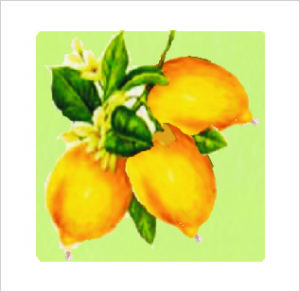 5780 / 2020
5780 / 2020
Sarah Yehudit Schneider
The word for etrog (אתרוג) relates to the Hebrew root, רגג, which means, “to long and desire.” For this reason etrog corresponds to to the heart area, the center of conscious emotion and desire.
Etrog is not indigenous to Israel.[1] It is not one of the famous “seven species” that HaShem brings to prove that the land of Israel is His most precious real estate. This is probably because etrog is not a tree that survives well in arid climates without extensive irrigation. But etrog has its own Biblical distinction. It is signified as the “fruit of the comely tree.” There is a holiday in the Jewish calendar that requires one to purchase a beautiful etrog. Not just an etrog, but a beautiful one. People go from shop to shop looking at hundreds of etrogs on display, trying to find one that meets certain objective standards of beauty and that strikes their particular fancy. This exercise of learning to admire the beauty of a fruit might seem strange, but it heals the soul on a very deep level. The hearts’s primal sense of aesthetic is cleansed and rectified by this mitzvah. And since we want what we find beautiful, the key to correcting our desire nature at its root is to refine our sense of beauty. For these reasons (and more), etrog relates to the heart where, says Kabbala, lies the sefira of Beauty.
Tefilah for a Beautiful Esrog, composed by the Ben Ish Chai (with a short addendum by this author)
May it be Your Will, HaShem, our God, and God of our ancestors, that You bless all of the etrog trees to bear their fruit at the proper time, and that they shall bear etrogim that are good, nice, beautiful, and clean from all blemish, and that no scars should form upon them, and that they shall be complete and they should not have any deficiencies, even pricked by a thorn. And these etrogim should be available for us and for all of Israel in every place that they are, in order to fulfill the mitzvah of taking [the etrog] with the lulav on the Holiday of Sukkot, that shall come to us with good life, and with peace, as You have written in Your Torah by way of Moshe, Your servant, “And on the first day you shall take for yourselves a beautiful fruit of the tree, a palm frond, and a branch of a myrtle tree, and [branches from a] willow brook …” (Vayikra 23:40). May it be Your Will, HaShem, our God, and the God of our forefathers, that You help us and assist us in this mitzvah of taking the lulav, myrtle, willow, and etrog, in the proper manner, in its proper time, on the festival of Sukkot, that shall come upon us for good life, and peace, with happiness and good-heartedness, and that You shall make a nice, beautiful etrog [that is] clean [of all blemishes and deficiencies], complete and kosher according to its laws, accessible to us.
And please, HaShem, let my sense of beauty and aesthetic become rectified on the most instinctive level by this mitzvah.
 The Still Small Voice Tu B’Shvat Hagada, fifteen years in the making, is finally available for public enjoyment. For information and purchase, click this link.
The Still Small Voice Tu B’Shvat Hagada, fifteen years in the making, is finally available for public enjoyment. For information and purchase, click this link.
[1] Citrus fruit originated in southeast Asia, India and China, and migrated westward from there to Asia Minor and the countries of the Mediterranean basin. Experts on the history of citrus trees generally concur that the Etrog was the first of the citrus fruits to reach our region.




